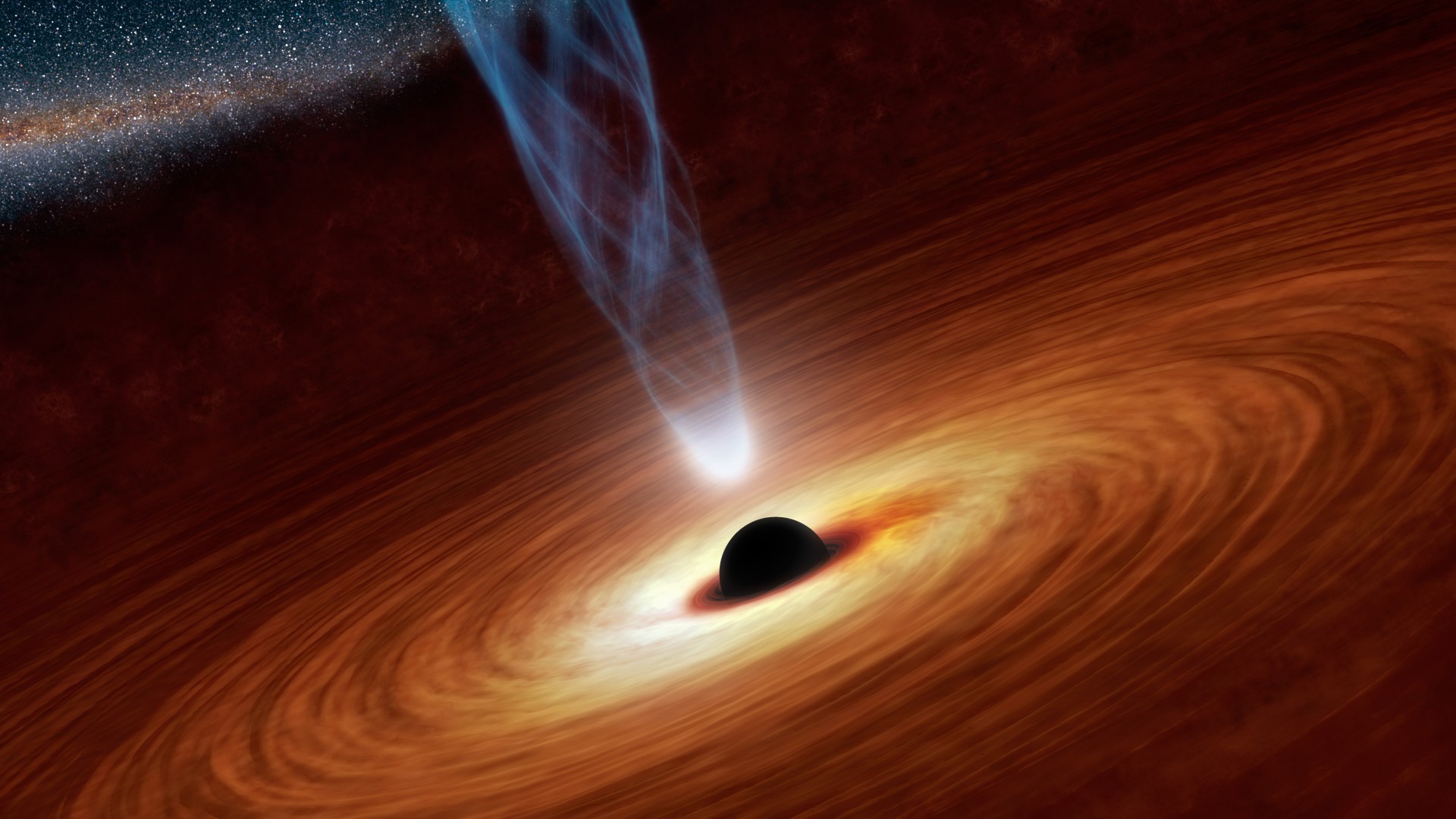Strange 'echo' from the Milky Way's central black hole reveals it briefly awoke 200 years ago
The Milky Way's black hole, known as Sagittarius A*, briefly flared at least a million times brighter 200 years ago.

A mysterious echo from the center of our galaxy's supermassive black hole has revealed that, some 200 years ago, the sleeping monster briefly woke up.
Located 26,000 light-years away, the black hole, called Sagittarius A*, is a gargantuan tear in space-time that is 4 million times the mass of the sun and 40 million miles (60 million kilometers) across.
Glowing dimly since its first direct imaging in 1994, Sagittarius A* was once believed to be dormant for millions of years. But now, a faint afterglow traced upon a gas cloud deep in space has revealed that, 200 years ago, the black hole glowed at least a million times brighter than it does today. The scientists who made the discovery published their findings June 21 in the journal Nature.
The discovery reveals "the past awakening of this gigantic object," the researchers wrote in a statement. "These results can further constrain the past activity of the galactic center."
Black holes are born from the collapse of giant stars and grow by ceaselessly gorging on gas, dust, stars and other black holes in the star-forming galaxies that contain them. If black holes grow large enough, friction causes the material spiraling into their maws (called an accretion disk) to heat up so much that they can outshine entire galaxies as they fire out powerful beams of high-energy X-rays.
Hints of the monster black hole's awakening first appeared 30 years ago, when X-rays were detected among the glow given off by the galactic center's gas clouds. By measuring the polarization of these X-rays using NASA's Imaging X-ray Polarimetry Explorer satellite, researchers narrowed down the glow's age and origin: a powerful X-ray pulse arriving at Earth from Sagittarius A* 200 years ago.
Get the world’s most fascinating discoveries delivered straight to your inbox.
"To get an idea of the increase in intensity of the X-ray emission when the black hole emerged from its quiescent state, it is as if a single glow-worm hidden in a forest suddenly became as bright as the Sun," the researchers wrote.
What caused the dormant black hole to erupt so suddenly is unclear, but the scientists have suggested that it might have been a large gas cloud or a massive star, both of which would have fed Sagittarius A* with enough material for a flare-up.

Ben Turner is a U.K. based writer and editor at Live Science. He covers physics and astronomy, tech and climate change. He graduated from University College London with a degree in particle physics before training as a journalist. When he's not writing, Ben enjoys reading literature, playing the guitar and embarrassing himself with chess.


